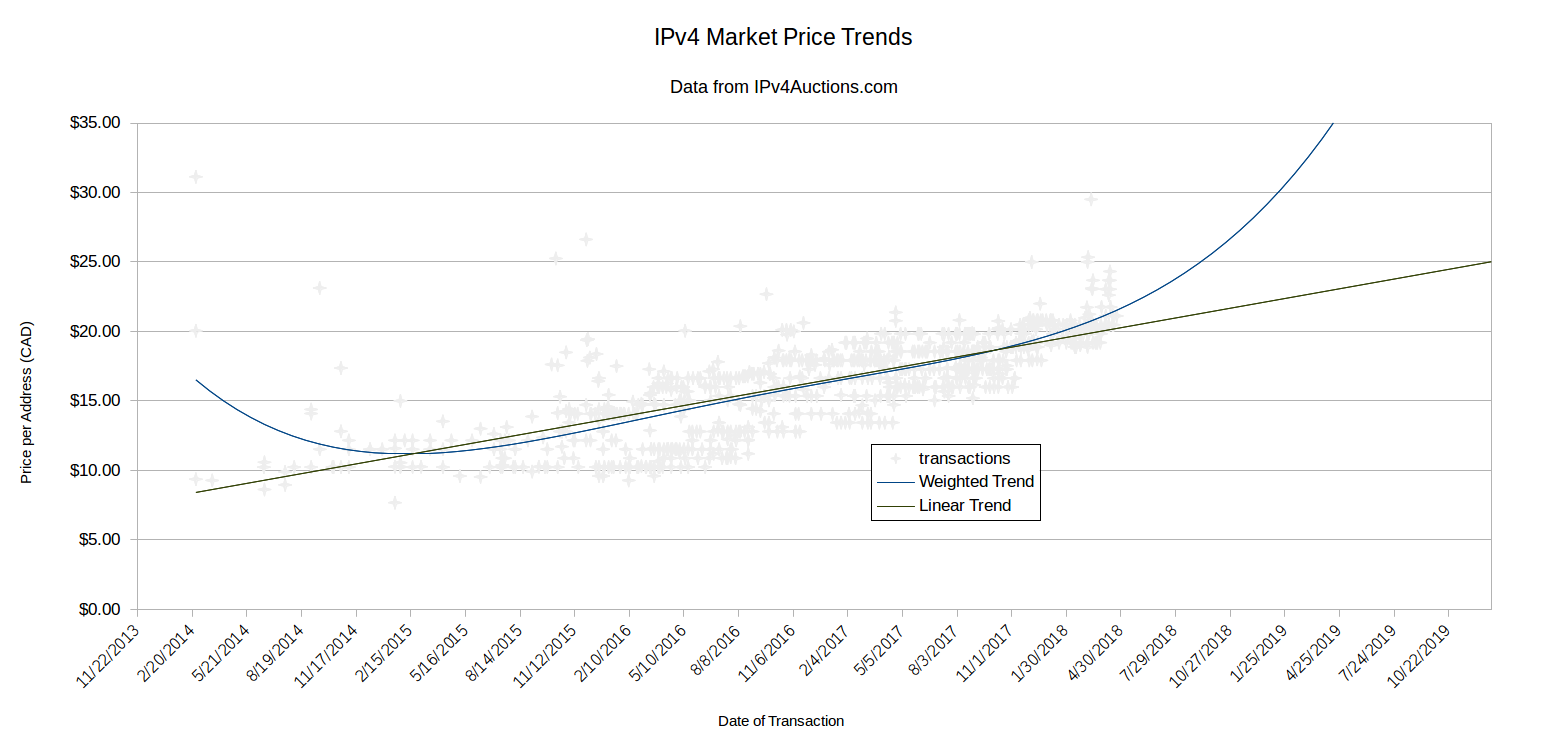As the world exhausts IPv4 addresses, and with IPv6 adoption low, translators within internet exchange points provide a viable solution.
Technology evolves and old tech goes out with the trash. But what do you do with technology that is still in heavy use, but nearing extinction? Well, the answer lies in innovative thinking, like adding IPv6-to-IPv4 translators into internet exchange points (IXP).
First, I’ll take a step back. For those unaware, we’re running out of IPv4 addresses. Those are the multi-digit addresses allotted to all internet-connected devices. They need to be replaced with IPv6, which offers a seemingly endless number of identifiers to match our growing appetite for internet connectivity. Wikipedia gives a good explanation of IPv4 exhaustion.
It has been six years since the World IPv6 launch, and we’ve made some good progress recently in Canada, now approaching a 20 per cent adoption rate. But we have a long way to go – the other 80 per cent.
Innovation among internet service providers (ISPs) in Canada has slowed down significantly over the past few years. Many people are scared to get into the business or challenge the status quo because it is too hard and the risk is too high. I am sure there are many other reasons why, but one major cause is that the cost of IPv4 addresses.
New ISPs currently face a start-up cost of $20 to $25 – but this shouldn’t be the case. IPv4 addresses should be more affordable, more ISPs should be adopting IPv6 and innovation in Canada should be thriving. Instead, the cost of IPv4 addresses are higher than ever before and IPv6 is free of additional charges.

If ISPs only run IPv6 on their network, they can still reach the entire IPv4 internet using translators
For quite some time, IPv6 has been thought of as the future, but it’s now our present-day reality and more than 20 per cent of Canadians are adopting this new technology. IPv6 is the successor to IPv4, born out of a need for more IP addresses that will exceed the available supply. How can we foster an internet ecosystem that supports IPv4 and IPv6? The answer is IPv6-to-IPV4 translators. Conceptually, translation means that a network is built using IPv6 and can be translated on an ad-hoc basis when it needs to access information in IPv4.
I believe that building a better online Canada means finding solutions that are scalable and future proof. Paying extra as we outgrow IPv4 addresses is neither of those. My hope for Canada’s internet is that internet exchange points (IXPs) across the country will connect to IPv6-to-IPv4 translators.
Of course, I can already hear the naysayers proclaiming “oh no, you can’t do that!”
Options are out there and Canadian ISPs need to get on board
A new ISP entering the market can’t get an IPv4 address allocation for their network, but the American Registry for Internet Numbers (ARIN) has a special allocation of IPv4 addresses dedicated to IPv6-to-IPv4 translation. This means that an ISP can obtain IPv6-only transit to support the majority of traffic on websites that use IPv6 like Netflix, Facebook, Google, YouTube, Instagram and more. The IPv6-to-IPv4 translators connected to IXPs could be configured so an ISP can translate the traffic using their assigned outbound IPv4 addresses.
The Internet Engineering Task Force (IETF) has published several transition mechanisms to support the IPv4 to IPv6 migration. The first was NAT64 followed by Dual-stack Lite, 464xlat and most recently MAP-T, which uses translation, and MAP-E, which uses encapsulation. Their most recent efforts have the scaling advantage of being stateless and are being used by networks across the country. You can read more about this technology here.
Taking this all into account, there are few, if any, reasons why Canadian ISPs shouldn’t support one of the IETF transition mechanisms. Retevia, a US-based organization, provides translators as a service for a cost-effective solution to move traffic to IPv6. I believe that we could partner with an organization like that to make this service available to Canadian ISPs via IXPs.
We may have low demand in the beginning, but over time, this just might be one way to grow IPv6, reduce operational costs and facilitate the migration from IPv4 to IPv6. Yes, someone will have to pay for this eventually, but that’s a conversation for another time.
What do you think?
As an expert in developing innovative, leading-edge IT solutions, Jacques has established CIRA as a global leader among ccTLD registries. He has 25+ years of experience in the private and not-for-profit sectors and as CIRA’s CTO,is currently leading CIRA Labs, CIRA’s innovation hub and providing leadership and direction for the management and security of the .CA registry and its underlying DNS.
A visionary in the Internet community, Jacques led the development of CIRA’s Internet Performance Test, is an outspoken advocate for the adoption of IPv6 and represents the .CA registry internationally as a member of a variety of working groups and advisory groups. He is committed to the development of a new Canadian Internet architecture. He has served as the catalyst for the creation of a national Canadian IXP association, CA-IX, and is a member of the Manitoba Internet Exchange’s (MBIX) and the DNS-OARC Board of Directors. Jacques is also a member of ICANN’s Security and Stability Advisory Committee (SSAC).
Jacques holds an Electronics Engineering Technologist diploma from Algonquin College, is ITIL v3 Foundation certified and is a certified Agile ScrumMaster.




